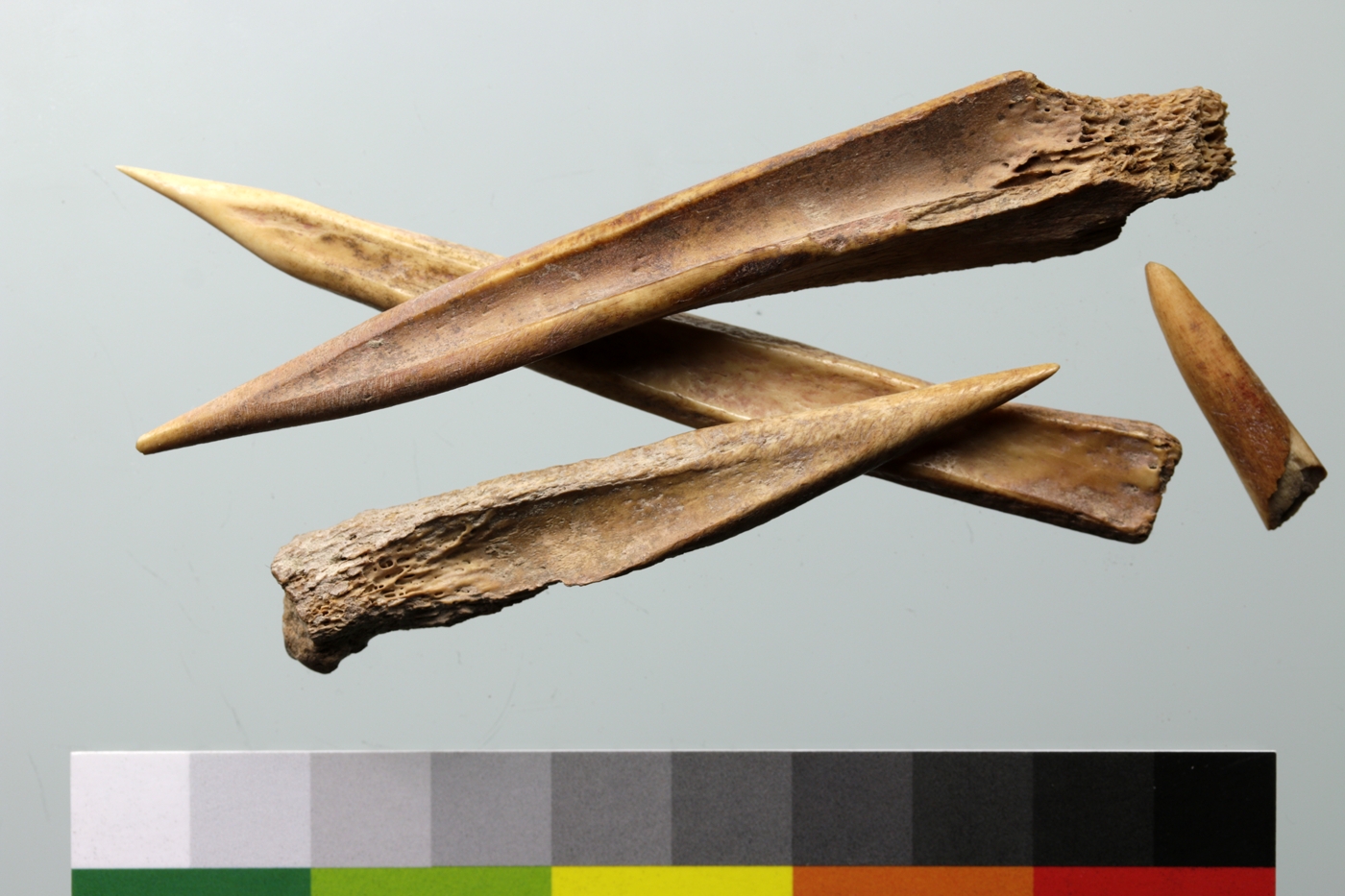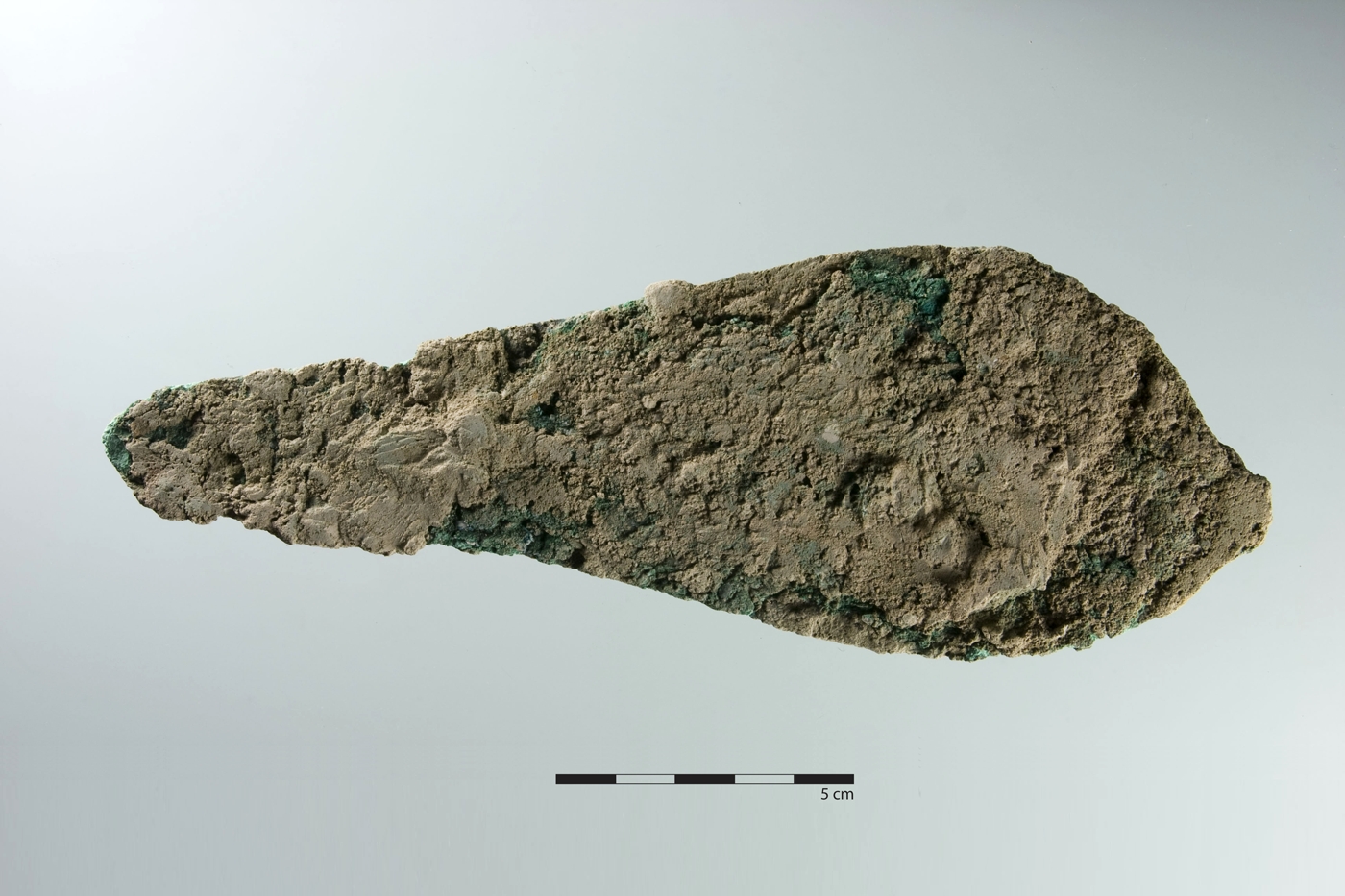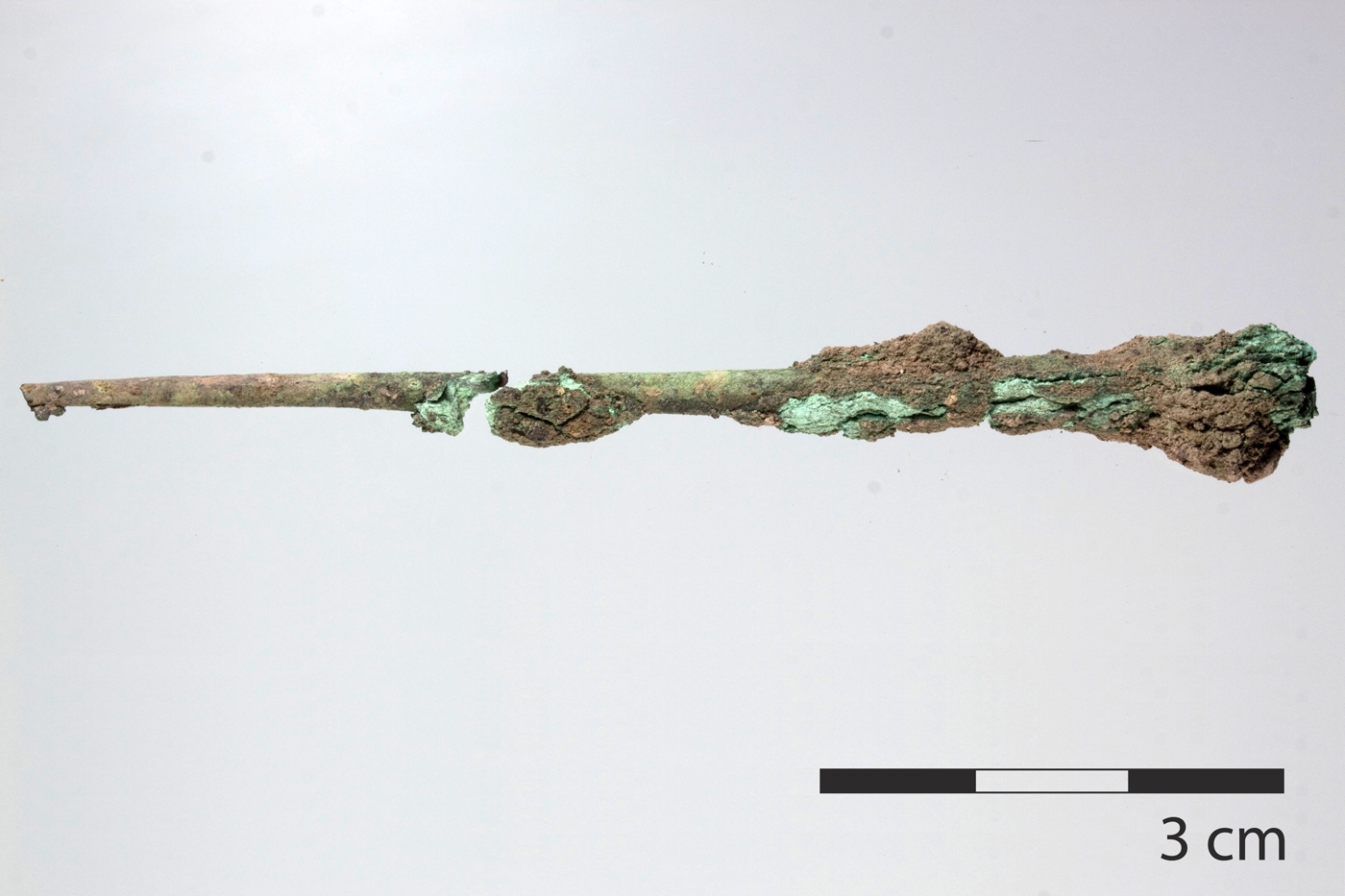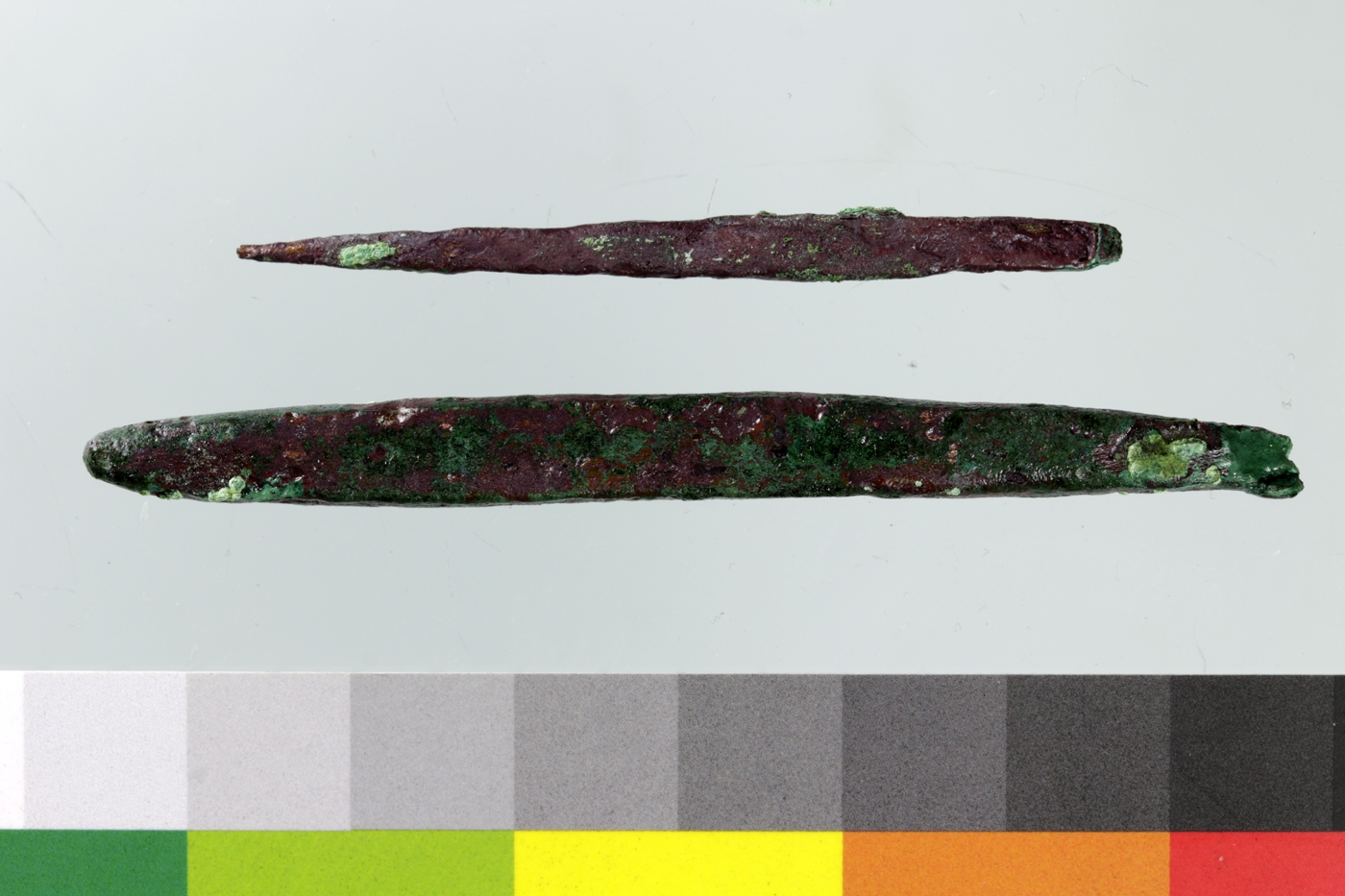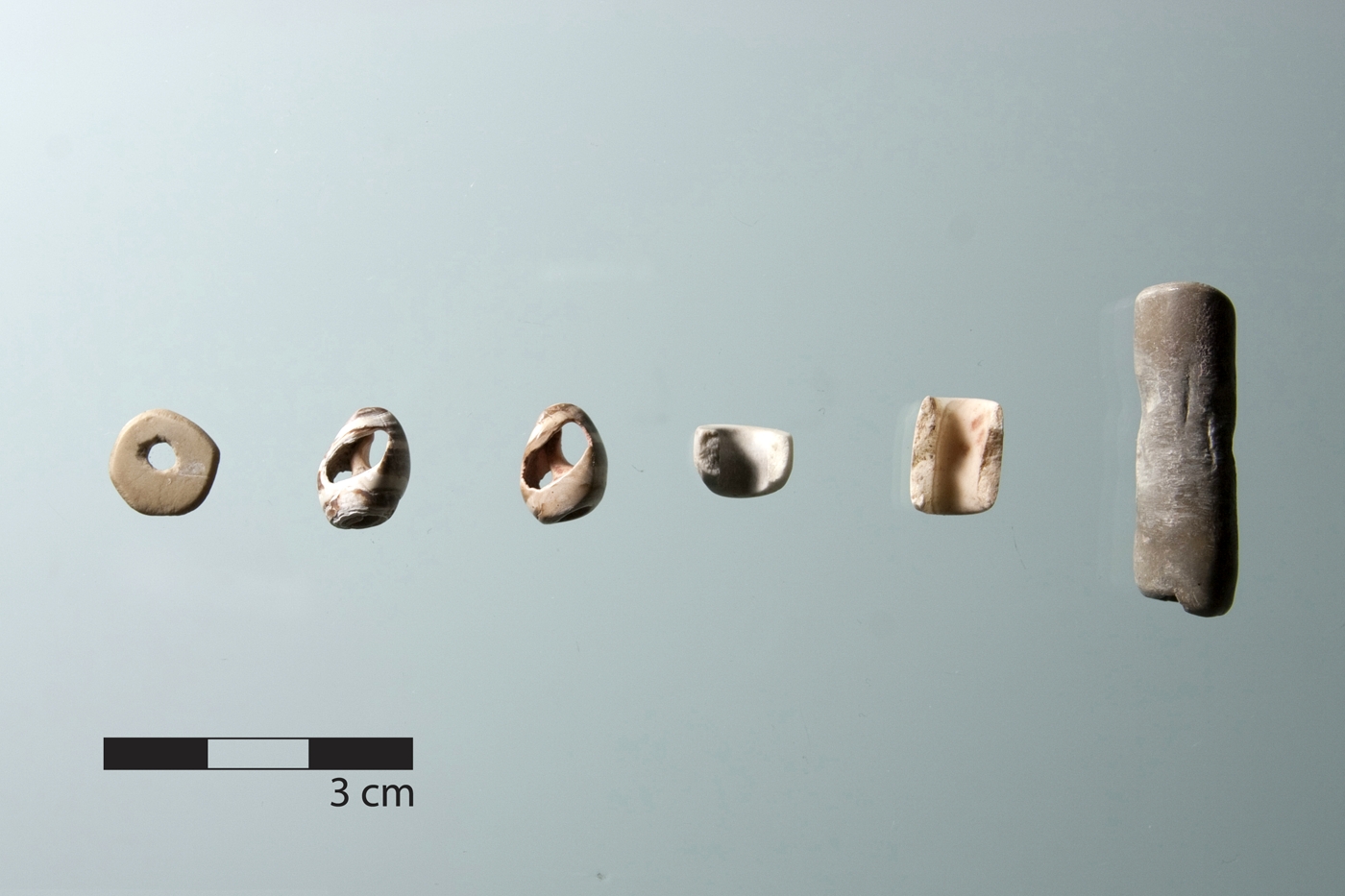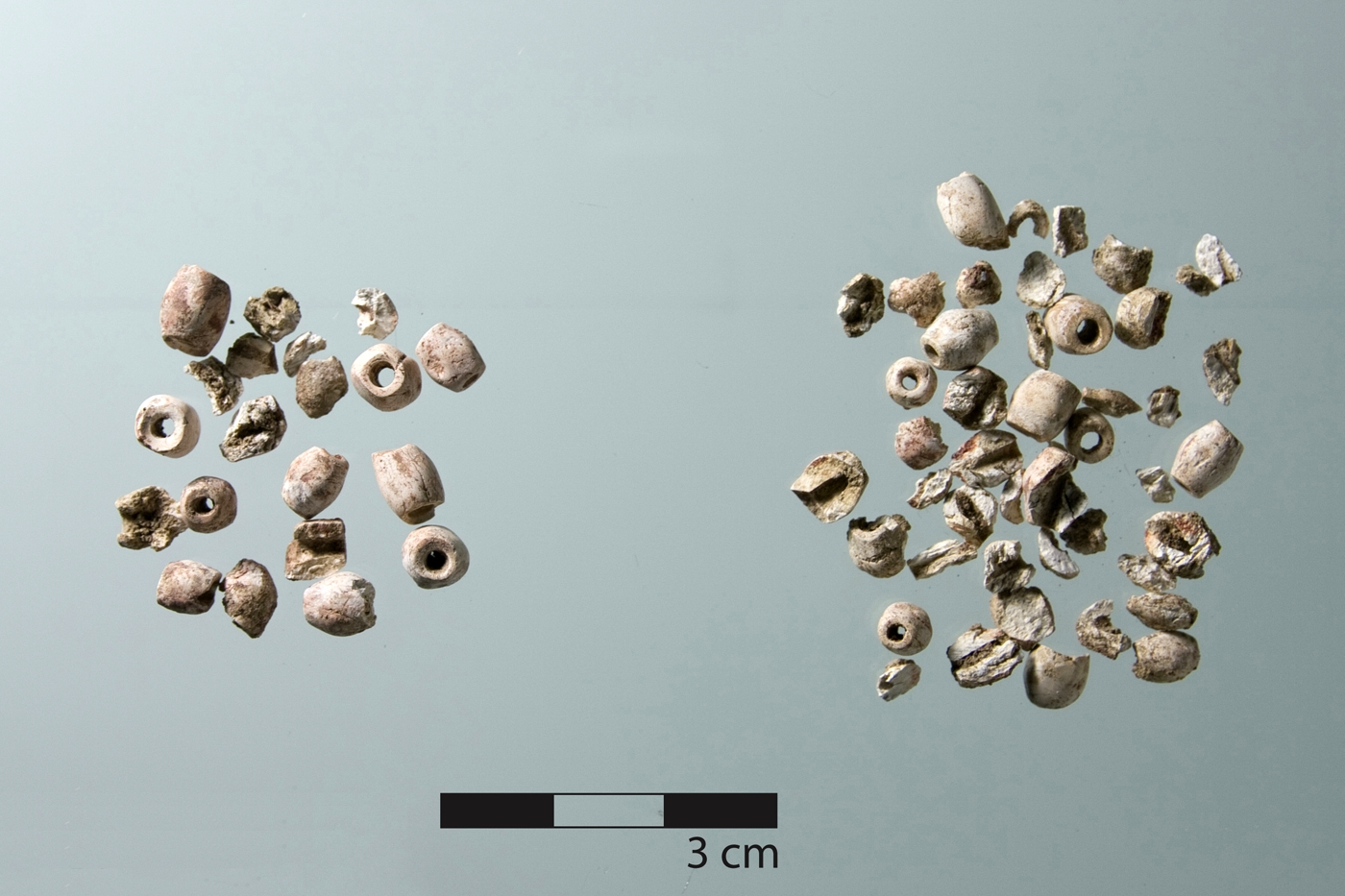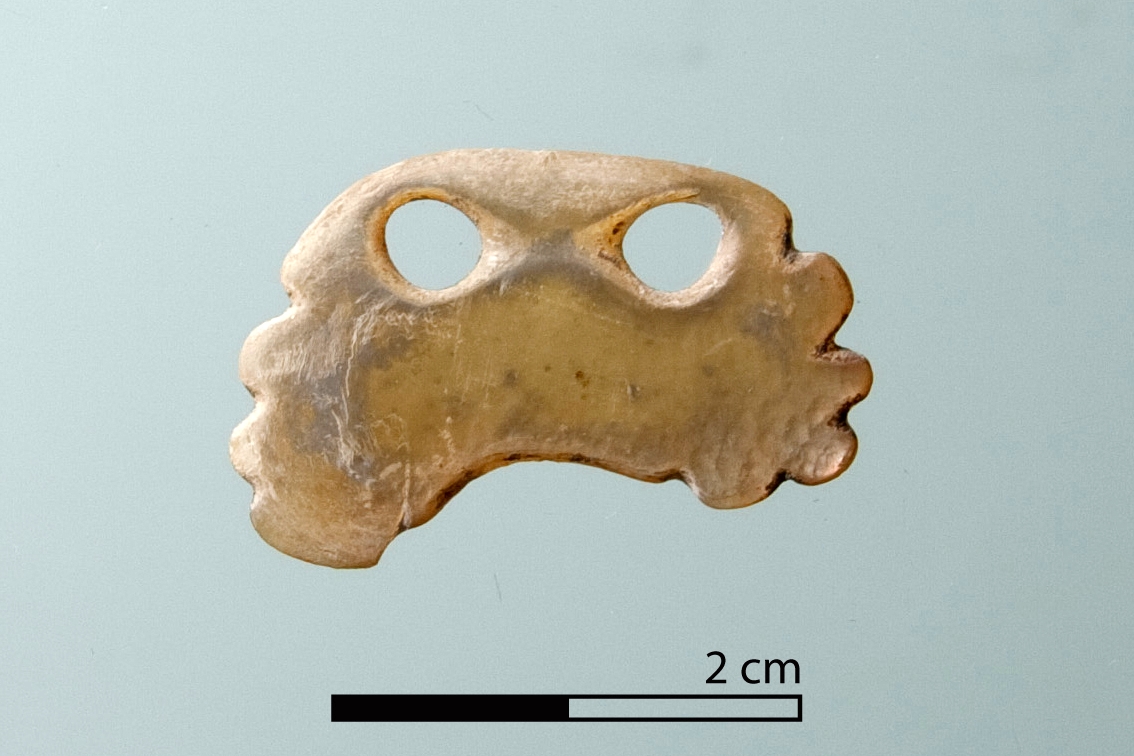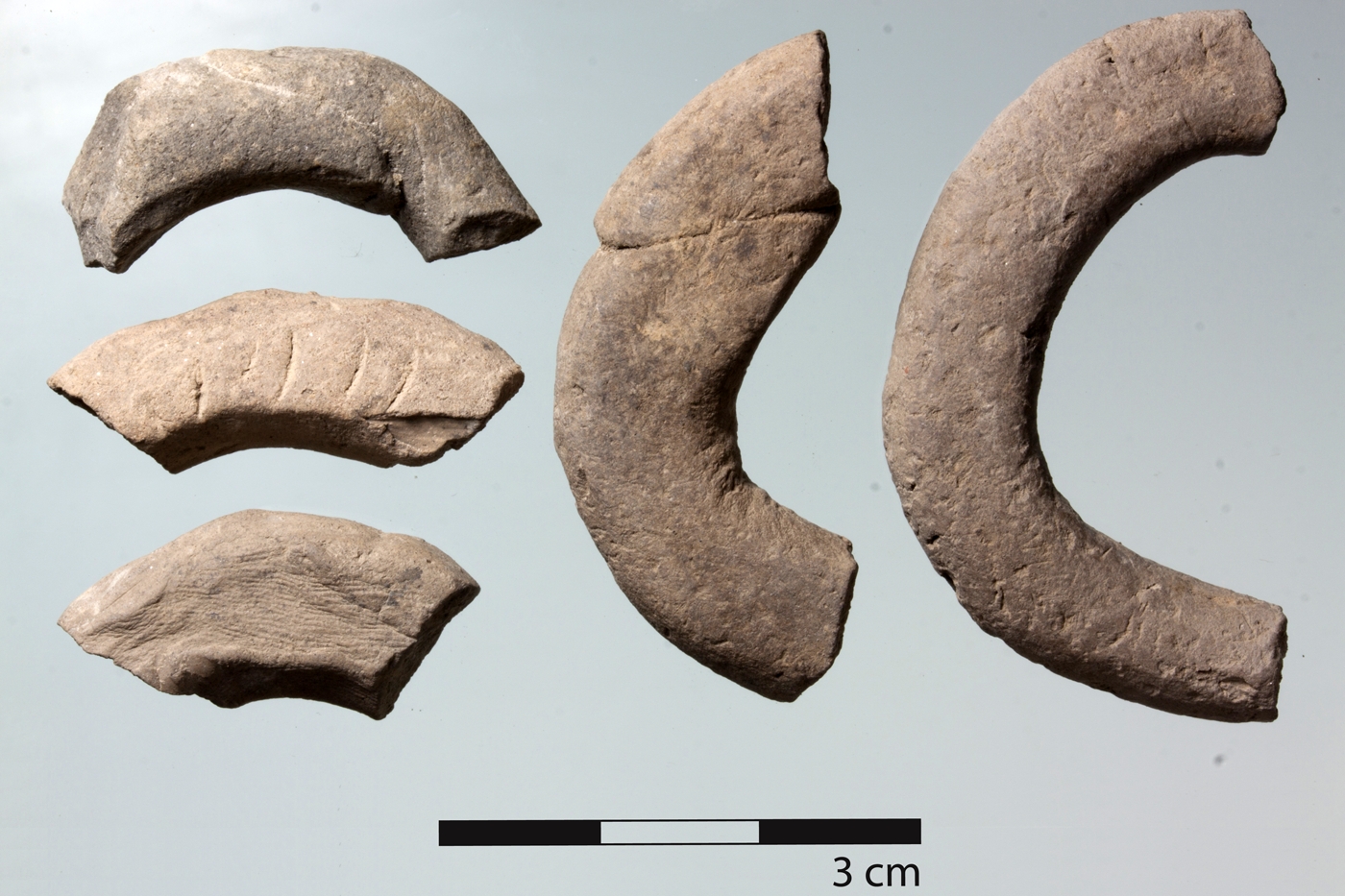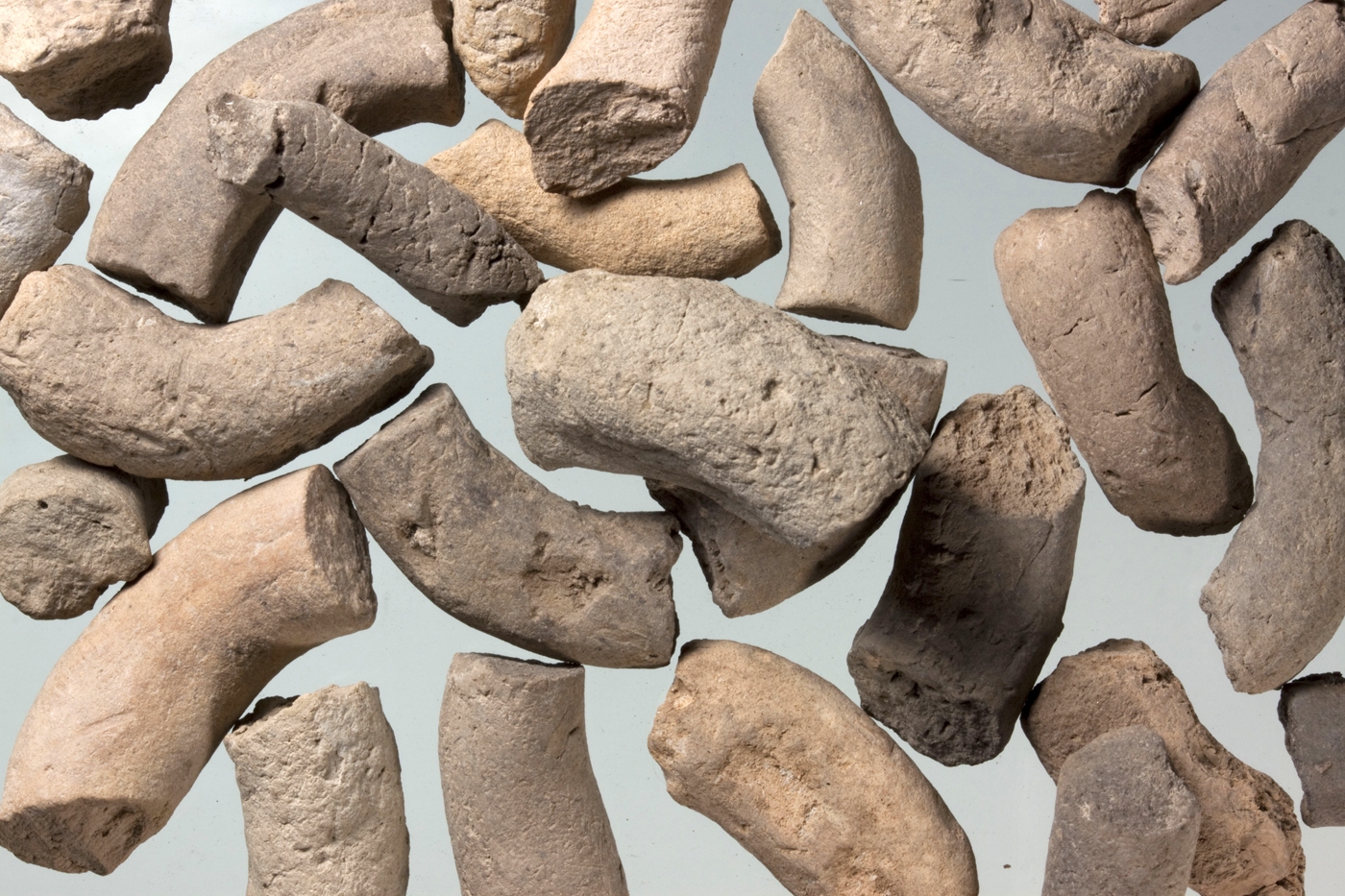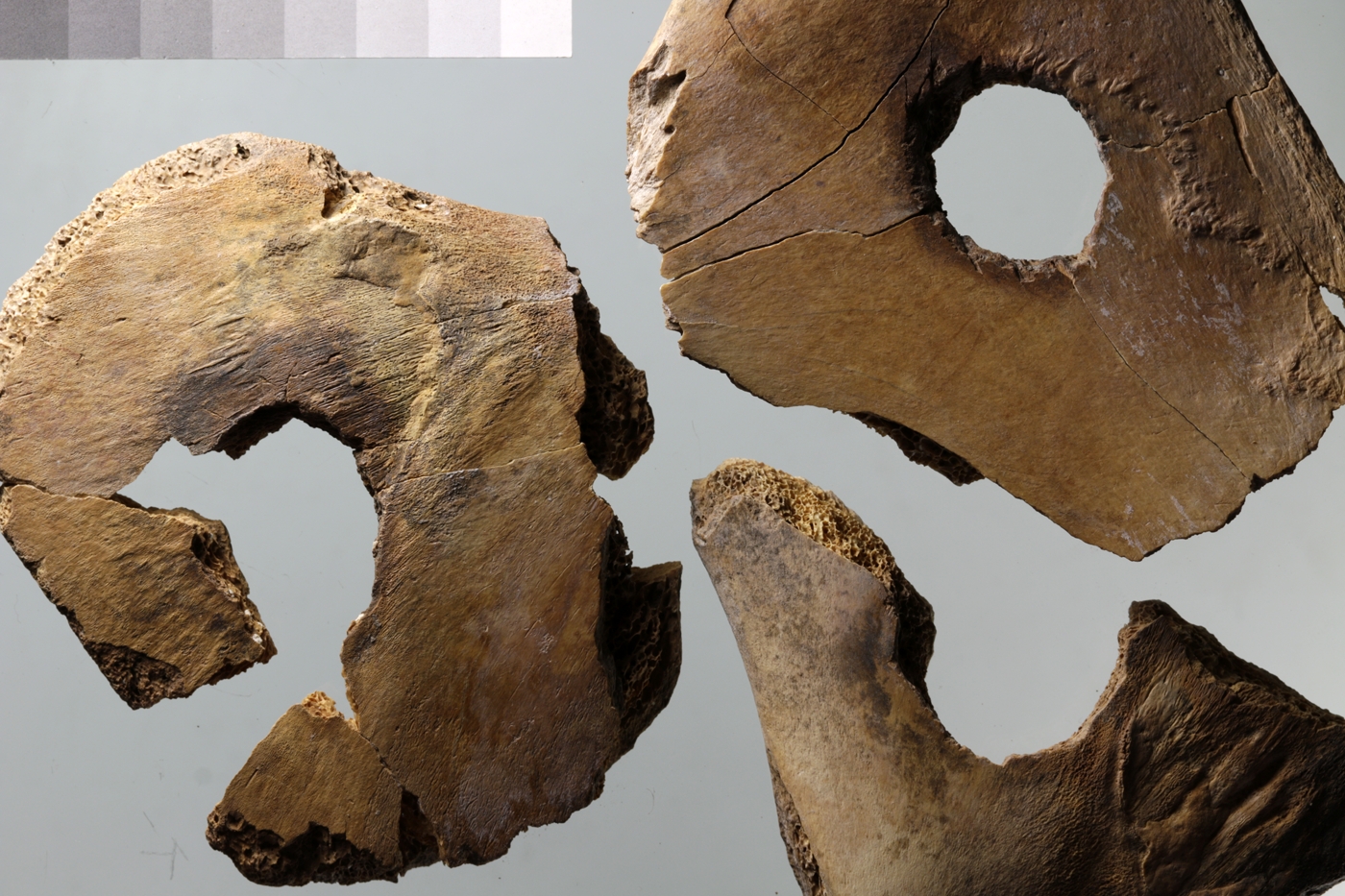Other Artifacts
In addition to the categories of objects such as spindle whorls, stone objects, or pottery that are well represented among the finds from Monjukli Depe, we also recovered an array of less common artifacts.
Among the more than 30 copper objects, the overwhelming majority occur in the form of pins or needles, varying in length from 5 to 8 cm. However, the occurrence of a chisel (?) and a knife or dagger-like object shows that there was a relatively broad range of uses for metal objects. Copper objects occur in small numbers in all Aeneolithic phases of the settlement. They were found primarily on surfaces, in ashy deposits, or built into architectural elements. The absence of evidence for metallurgy in the settlement or of copper ore in the Kopet Dag points to the likelihood that the tools arrived in Monjukli Depe as finished products, potentially coming from locations on the Iranian Plateau.
Another familiar category of finds consists of beads. A total of approximately 60 were found, including fragments. They are seldom more than 1 cm in diameter or length and are made of a variety of materials. Limestone was most frequently used, but shell, bone, clay, and carnelian occur sporadically. Occasional beads made of lapis lazuli point to the existence of networks that extended as far as Badakhshan in northeastern Afghanistan. Bead shape is variable and ranges from discoidal to ring, cylindrical, biconical, and teardrop. An exceptional find comes from the grave of an infant who was buried with two dozen limestone beads, presumably once on a string. Two mother-of-pearl pendants were presumably used in a similar way to the beads.
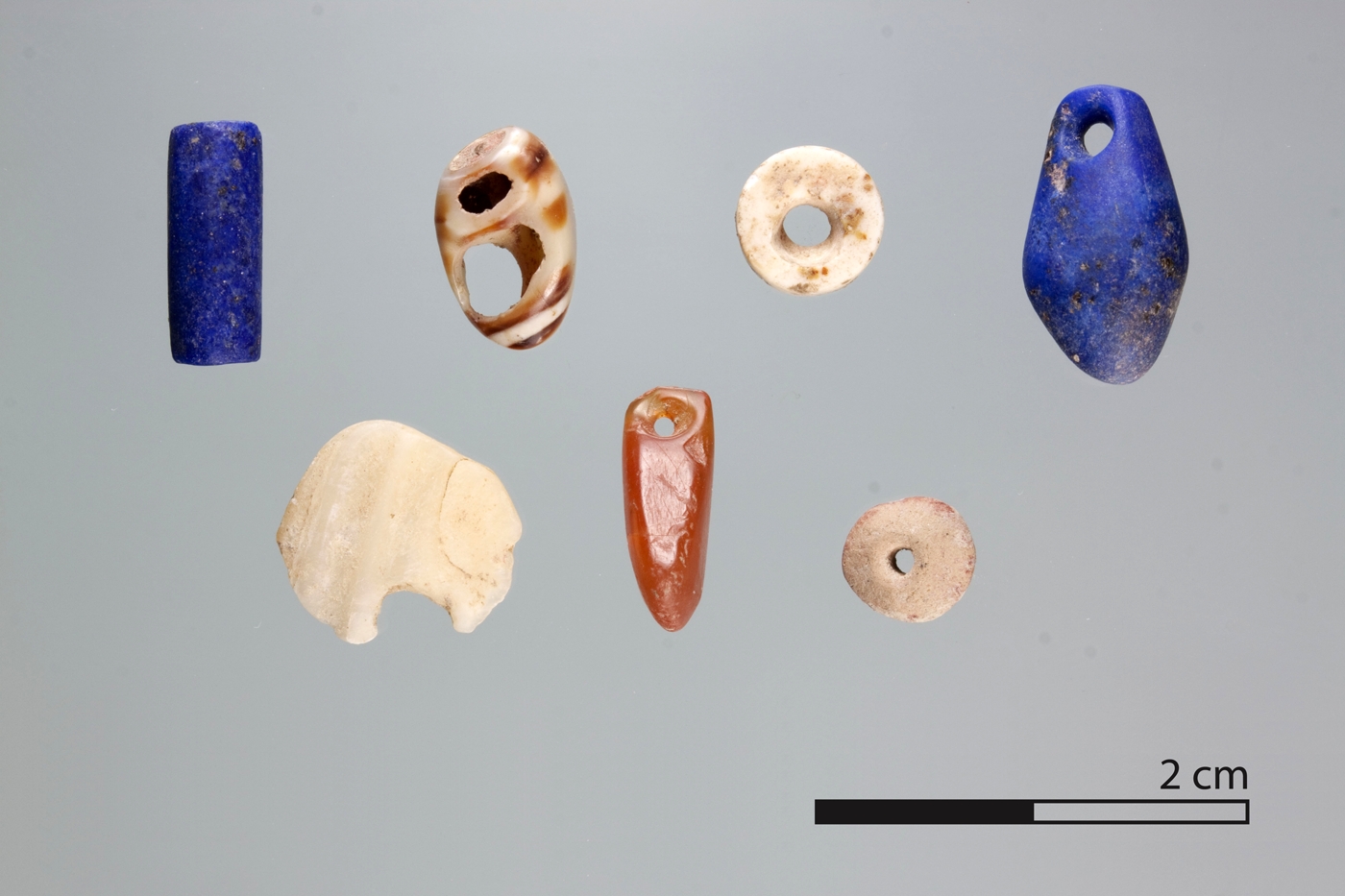 Carnelian, shell, and lapis lazuli beads from Aeneolithic contexts as well as clay and stone beads dating to the Neolithic.
Carnelian, shell, and lapis lazuli beads from Aeneolithic contexts as well as clay and stone beads dating to the Neolithic.
The Aeneolithic bone industry from Monjukli Depe is limited to a handful of tools, especially awls that may have been used to perforate leather or similar materials. Flat bone objects with a hole near the center also occur occasionally. They consist of worked pelvis bones, probably of cattle, and show signs of burning around the hole.
In addition to the tokens and spindle whorls, there are numerous other objects made of unbaked clay. These are often difficult to identify, and we mostly recorded them as "shaped clay."
An enigmatic category of finds consists of those we dubbed clay rings, of which more than 200 were found. They consist, as the name suggests, of small, unbaked rings made of clay. They range in diameter from 2 to 5 cm and are approximately 1 cm thick. It is unclear what they were used for. They were especially common in the burnt House 14, but they also occur here and there in other buildings and exterior areas. Their locations in House 14 suggest that the rings may have been on the roof or fastened to the walls, perhaps attached to wall hangings or to fix bundles of organic material.
For further reading, see Keßeler in Pollock et al. 2011; Güneş 2019.
